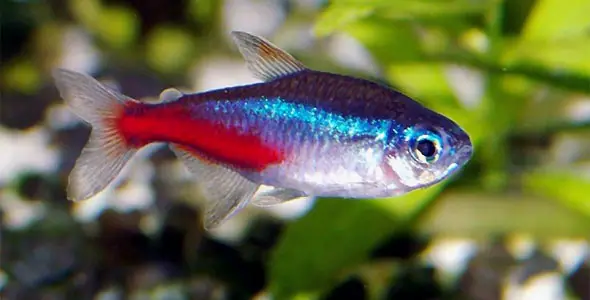While there are few fish that can be seen in both fresh and saltwater aquariums, there are a number of invertebrates that have adapted to freshwater and can be used as ornamental additions to your tank! Shrimp, though small, have demanding needs and are not to be taken lightly. Additionally, shrimp are often at risk of being eaten for lunch if they are significantly smaller than the fish with which they share aquarium space, leading to a loss in your investment. It is important to keep shrimp only in tanks where they are not at risk of being eaten.
Sub-Species for Aquariums:
Bee – A variety of the Red Crystal Shrimp, the Bee Shrimp is black and white and provides a striking, shimmering addition to your tank. If you have more than one and they are different genders, you may find that they will breed.
Ghost – Ghost or Glass shrimp are an interesting addition to the tank. They are transparent except for a colored spot on the center of their tail. If they breed, you will be able to see the eggs as small green spots carried beneath the tail. If you have a fish that is struggling to eat, Ghost shrimp are an excellent food source. Because of this, caution should be taken in adding them to any tank with fish.
Amano – Though this is a somewhat plain shrimp, the Amano makes up for its lack of color in its appetite. This is a highly popular shrimp because of its love of freshwater algae and the amounts it will eat. A few Amano shrimp will keep your fish tank very, very clean.
Mandarin – The Mandarin shrimp is orange colored. It is an ornamental shrimp that will catch viewers’ eyes with its bright color and strange little movements. It is also a huge help in keeping algae under control. If your aquarium is aquascaped with dark-colored items, the Mandarin shrimp will absolutely pop out of the background.
Red Cherry – A bright and colorful tankmate, the Red Cherry shrimp alternates between translucent and bright red. They are incredibly adaptable and hardy, making them highly sought after for any tank. It is important to note that newly added Red Cherry Shrimp will appear translucent until they have adapted to their new environment.
Red Crystal – A mutation of the Bee Shrimp, the Red Crystal is one of the more popular freshwater aquarium additions. It is a beautiful and peaceful shrimp that is highly sought for its incredible appetite.
Singapore Flower – This is a shrimp that will change colors from tan to bright red depending on mood or need. They are one of the larger varieties of shrimp and have fan-like appendages on their front legs that they use to filter through the water and catch food.
Viper – Perhaps the largest of the freshwater shrimp, the Viper Shrimp can grow up to six inches in length. In addition, it has a potential longevity of 5 years in ideal water conditions! They also change colors as they age, beginning a blue that fades into gray and darkens as they age, though they will be white after molting. And don’t worry, despite the appearance of “claws”, they are quite peaceful and those “claws” are actually bristles that they will fan to catch food in the currents.
Care:
The greatest consideration when looking to add ornamental shrimp to your aquarium is the attitude of your fish. Do not add shrimp to a tank where they may be eaten! Adding shrimp requires the same consideration as adding a fish; they have the same water requirements and essentially take up the space of a fish. In other words, consider adding a shrimp to be the same as adding a fish when considering your tank population. Most shrimp do well with water in the high 70˚F’s and a pH between 6.5-7.5. All shrimp require lots of hiding places. Remember, ALL shrimp are allergic to copper and will die if copper-based medications are added to the water.
Diet:
Shrimp are quite happy to exist off debris and algae that can be found at the bottom of the tank or floating in the currents. However, if they seem to be doing an excellent job of keeping the tank clean, they are probably not getting enough food and should be fed pellets or flakes to supplement their diet.
Size: Up to 6 Inches
Freshwater/ Saltwater: Freshwater
Diet: omnivore
Reef Compatibility: NA
Tank Mate Compatibility: 10
Lifespan: Up to 5 Years





